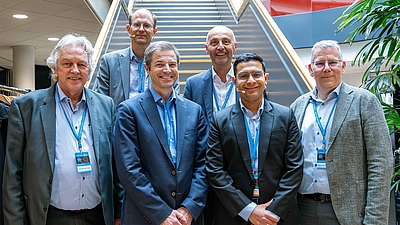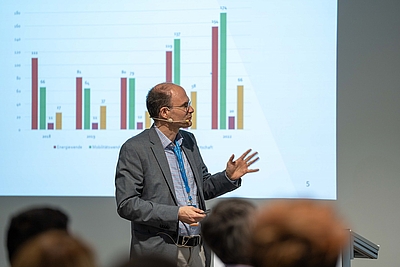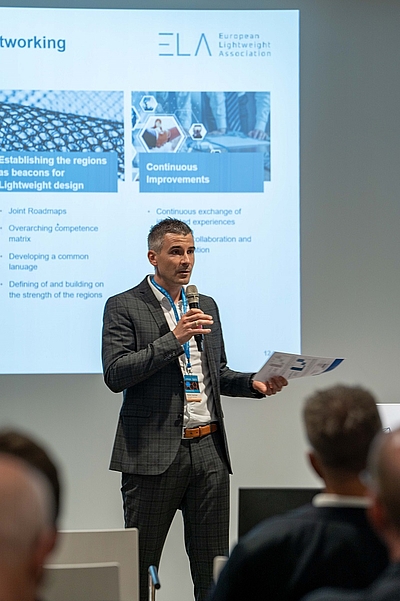There is no way around lightweight construction in Switzerland either

17.05.2024
Lightweight construction applications and the framework conditions for promoting innovation in Europe were the focus of a prominent symposium at the Hightech Zentrum Aargau in Brugg.
The focus on materials and nanotechnologies at the Hightech Zentrum Aargau (HTZ) placed the successful initiation and implementation of lightweight construction projects at the heart of its 2024 annual event. The audience at Technopark Aargau primarily included development and production experts, researchers and representatives of networks from the European lightweight construction community. The HTZ itself - like the A2LT - is a founding member of the European Lightweight Association (ELA).
Transnational cooperation is sensible
Lightweight construction enables energy and resource efficiency and the reduction of CO2 emissions - across all industries, materials and technologies. Lightweight construction is a complex cross-sectional technology that is of great importance far beyond the mobility sector, for example in mechanical and plant engineering, in the energy sector or in the construction, medical technology and sports equipment industries. The product range is correspondingly broad: from lightweight hydrogen tanks for aircraft and innovative, robot-assisted joining technologies for lightweight materials to ultra-light racing bikes. A key factor for success is the complementary expertise of the project partners.
Various funding sources available
“Successful product and process innovations in lightweight construction require cooperation across national borders,” explained Marcus Morstein, focus area manager and innovation and technology expert at HTZ Aargau.
The framework conditions for specific innovation funding in Europe also formed an initial focus of the program. The HTZ succeeded in bringing those responsible for national funding programs in Germany, Austria and the Swiss Agency for Innovation Promotion (Innosuisse) to Brugg. Werner Loscheider from the German Federal Ministry for Economic Affairs and Climate Protection said that both incentives and regulations were needed to push lightweight construction technology further. Networking and exchange between science, industry and politics would also be beneficial. It would be important to develop a European lightweight construction strategy, in the implementation of which Switzerland would also be involved. Marc Pauchard, Head of Knowledge Transfer and International Cooperation at Innosuisse, underlined Switzerland's ambition to efficiently promote as many innovative projects as possible. Pauchard called on entrepreneurs to take part in thematically appropriate calls for projects. Alexander Pogany from the Austrian Federal Ministry for Climate Action, Environment, Energy, Mobility, Innovation and Technology (BMK) presented the Eureka funding call and M-ERA.NET, the appropriate funding instruments for this purpose, and presented further activities in the field of lightweight construction at the BMK.
Networking of industry and science
The second thematic focus was on specific funding projects. Specialists from industry and research presented lightweight construction innovations from the fields of production technology, materials technology, non-destructive testing and sustainable composites.
Stephan Ucsnik from the LKR Leichtmetallkompetenzzentrum Ranshofen (Light Metals Technologies Ranshofen) presented the results of the R&D projects We3D, LH2-WAAM-Tank and MULTI-FUN in his lecture “Wire-based additive manufacturing of light metal alloys for future electric mobility applications”. In addition to wire-based additive manufacturing, the LKR also focuses on material development of light metals, casting technology, forming technology, numerical simulation and material testing and characterization.


